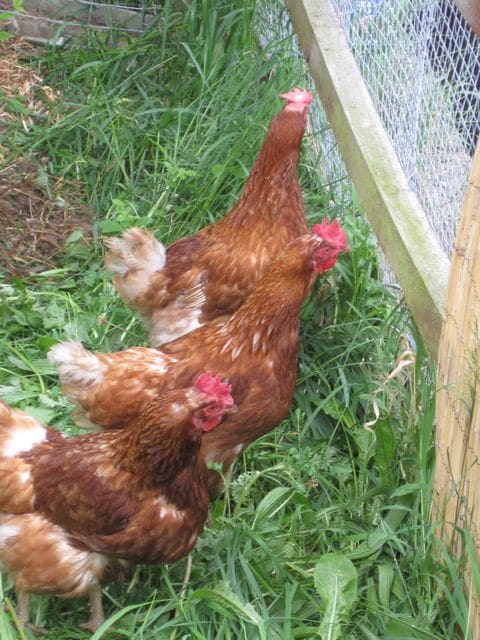Sanctuary Life
Chickens in recovery
Chickens are easily stressed but just as quickly they seem to recover. The hens we took in several weeks ago have now grown new feathers and have settled well to their life of freedom and fresh food. Giving hens a natural life is the key to success and health, they love to be outside during the day and to be able to scratch in the grass and look for grubs and worms – they should form a big part of their diet. They need a generous portion of corn to go with the food they find for themselves, about a handful per bird is usually sufficient, but feeding to appetite is best especially when they’ve been kept in cramped conditions.
If grass is in short supply then a lettuce is a treat and any when you’re gardening they like to sort through the weeks for you. You need to check the hens over for scaly leg, which is crusty skin on their legs. It’s painful and if they have it you need to treat it right away. You can get a spray from an agricultural supplier, follow the instructions and it works well.
Picking hens up is a knack you will acquire with practice – getting hold of them when they have begun to perch is best as they are in sleep mode then. If you hold them with both wings tucked into their sides you will stop them flapping about and they will not be distressed.
Keep the hen hut clean so that mite infestations don’t build up – we put shavings down on the floor and hay in the nest boxes and change it regularly. You need to provide a perch so that the hens don’t sit in their nest boxes – if they do the eggs will be soiled when they lay. The higher the perch is the better for the hens – they roost in trees in their natural life.
We like to give our hens plenty of room – you can squash lots of hens into a tiny hutch but it never seems a good idea to do so to us. The pecking order is important to hens and they need space to sort out who goes where. There will always be a dominant leader and everyone else will have to do as she says!

